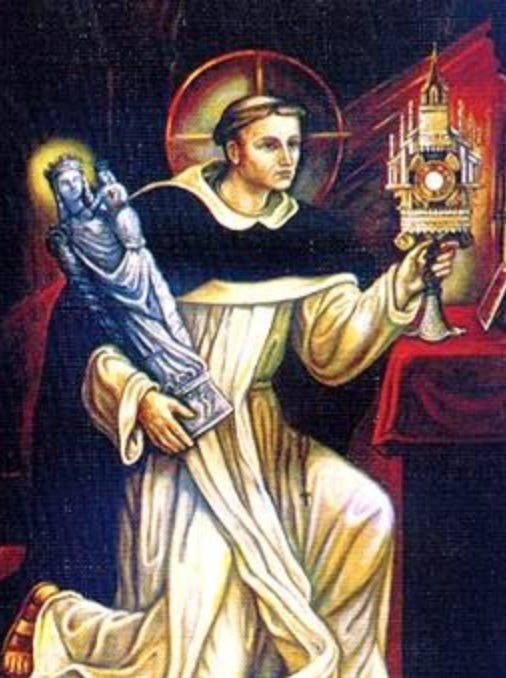17th August - St Hyacinth
He is venerated as an apostle of Poland
17th August ~ ST HYACINTH (A.D. 1257)
St Hyacinth (in Polish, Jacek, a form of John) was a Silesian, born in 1185, in the district called Oppeln, between Breslau and Cracow. He is venerated as an apostle of Poland, and was undoubtedly a great missionary.
He became a Dominican, perhaps in Rome, in 1217 or 1218, and came with other Dominicans to Cracow, where they were given the church of the Holy Trinity by the bishop, Ivo Odrowaz. Hyacinth is recorded as being at this priory again in 1228, and ten years later was preaching a crusade against the heathen Prussians. The field of his labours was doubtless extensive; but his biographers take him north-east into Lithuania, east to Kiev, south-east to the Black Sea, south to the Danube and north-west to Scandinavia, leaving Silesia, Pomerania and Bohemia to his fellow Dominican, Bd Ceslaus, who was said to be also his brother in the flesh. The miracles with which Hyacinth was credited are no less sensational, some of them being apparently suggested by what had been related of other holy ones in Poland and in his order. During his time the Friars Preachers did penetrate down the Vistula to Danzig and towards Russia and the Balkans, and a number of priories were founded; but much damage was done to their missions after the Mongols crossed the Volga in 1238, in the repairing of which no doubt St Hyacinth was active.
He died on the feast of the Assumption 1257, after exhorting his brethren to esteem poverty as men that had renounced all earthly things, “For this is the testament, the sealed deed, by which we claim eternal life”. He was canonized in 1594.
What commonly passes current as the life of St Hyacinth partakes more of the nature of a saga than of a sober historical record. This is pointed out both by Knöpfler in the Kirchenlexikon and by the modern Bollandists (e.g., in Analecta Bollandiana, vol. xlv, 1927, pp. 202–203). The earliest and practically the only source of information down to quite recent times was the account of St Hyacinth’s life and miracles, written by Fr Stanislaus of Cracow a hundred years after the saint’s death. It is printed in the Monumenta Poloniae Historica, vol. iv, pp. 841–894. Later biographers only embroidered this account with further extravagances, and consequently even such lives as that by the Comtesse de Flavigny, S. Hyacinthe et ses compagnons (1899), must be read with great caution. The most valuable contribution which has so far been made to the perplexed history of St Hyacinth is that of B. Altaner, Die Dominikanermissionen des 13 Jahrhunderts (1924), pp. 196–214. For the traditional account see Mortier, Histoire des maîtres généraux O.P., vol. i, pp. 215–218 and 377–388; Procter, Lives of Dominican Saints, pp. 229–232; and for a fuller bibliography Taurisano, p. 16.
From Butler’s Lives of the Saints



